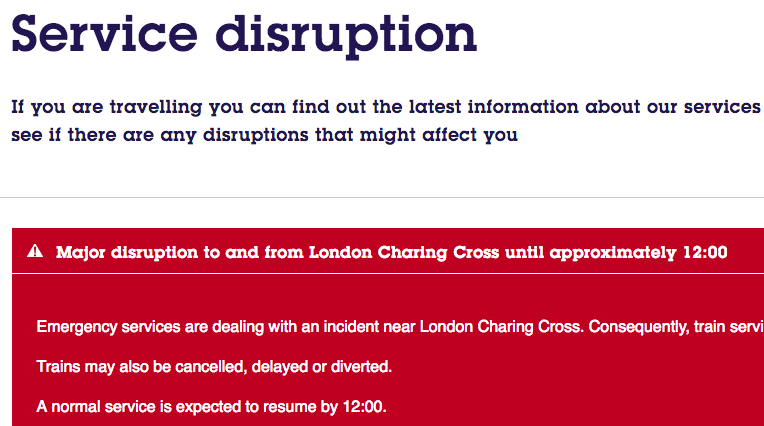Charing Cross station closed: Gas leak causes morning rush hour chaos
‘The emergency services have put an exclusion zone in place around the station’
Your support helps us to tell the story
From reproductive rights to climate change to Big Tech, The Independent is on the ground when the story is developing. Whether it's investigating the financials of Elon Musk's pro-Trump PAC or producing our latest documentary, 'The A Word', which shines a light on the American women fighting for reproductive rights, we know how important it is to parse out the facts from the messaging.
At such a critical moment in US history, we need reporters on the ground. Your donation allows us to keep sending journalists to speak to both sides of the story.
The Independent is trusted by Americans across the entire political spectrum. And unlike many other quality news outlets, we choose not to lock Americans out of our reporting and analysis with paywalls. We believe quality journalism should be available to everyone, paid for by those who can afford it.
Your support makes all the difference.Commuters from south-east London, Surrey and Kent face massive disruption due to the closure of Charing Cross station. The key London railway terminus is at the centre of an exclusion zone established after a gas main ruptured in the Strand.
Southeastern, the train operator, said: “Emergency services are dealing with an incident near London Charing Cross.
“The utility company are working to stop the leak, but the fire brigade have put an exclusion zone in place which includes the railway station. This exclusion zone is expected to be in place for a number of hours.”
Long after the leak was first discovered, the smell of gas is pervasive.
Charing Cross is at the heart of London, and the Strand is a key artery normally used by thousands of cars, buses and taxis during the rush hour. It connects Westminster and Trafalgar Square with the Aldwych, Fleet Street and the City.
At the western end, where Charing Cross station is located, the only vehicles apart from the emergency services are two night buses, which were unable to reach Trafalgar Square and abandoned as close as they could get to the railway station.
On a typical working day, around 160,000 passengers use Charing Cross.
The train operator said: “Southeastern are working to run as many trains as possible, by diverting some trains to other London stations. However, there will be cancellations on their Charing Cross routes and also on other lines which share the routes to Charing Cross.”
The closure is also affecting Waterloo East, adjoining the main Waterloo station.

Passengers who normally use the affected routes are able to use their tickets on London Underground, the Docklands Light Railway, London Overground, Thameslink and Southern services, as well as the High Speed Southeastern services to St Pancras International.
Trains which are running are expected to be even more crowded than usual. Bus passengers face disruption, with key east-west services - the 6, 9, 11 and 15 - unable to run on their usual routes.
A normal service is expected to resume by 12 noon.

Join our commenting forum
Join thought-provoking conversations, follow other Independent readers and see their replies
Comments